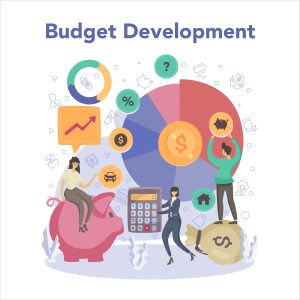Budgeting is an important part of financial planning in the United States (USA). It entails developing a detailed plan outlining how an individual, household, or organisation will allocate their income or resources over a set period of time, usually a year. Budgeting assists individuals and organisations in managing their finances, saving for the future, and reaching their financial objectives.
In the USA, budgeting is essential for every aspect of life, from personal finances to government budgeting.
Here are the different types of budgeting in the USA -
Personal Budgeting:
Creating a budget plan to manage personal finances, such as monthly income, expenses, savings, and investments, is a part of this. Personal budgeting is important in the United States because it helps people stay on track with their finances and avoid financial problems like debt and bankruptcy.


Household Budgeting:
Like personal budgeting, this involves developing a budget plan for a household or family. Household budgeting is essential in the United States because it assists families in managing their finances, saving for future expenses such as education and retirement, and avoiding financial problems.
Business Budgeting:
This entails developing a business budget that includes revenue, expenses, and investments. Business budgeting is essential in the United States because it enables businesses to manage their finances, make informed decisions, and achieve their financial objectives.


Government Budgeting:
This entails developing a budget for the government, which includes revenue, expenses, and investments. Government budgeting is critical in the United States because it assists the government in managing its finances, providing public services, and achieving its policy objectives.
The budgeting process in the United States consists of several steps as follows
- Setting financial goals: This involves determining what an individual or organization wants to achieve financially.
- Estimating income: This involves calculating how much income an individual or organization expects to receive during the budgeting period.
- Identifying expenses: This involves identifying all the expenses an individual or organization expects to incur during the budgeting period.
- Prioritizing expenses: This involves ranking expenses in order of importance, with the most critical expenses taking priority.
- Allocating resources: This involves determining how much money or resources will be allocated to each expense category.






